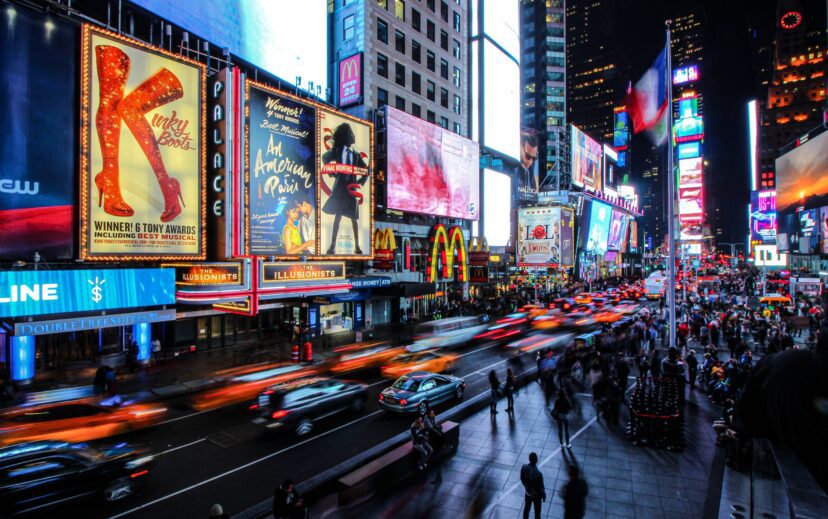COVID-19’s Impact on Theatre and Theatre Workers
As some industries inch toward normalcy amidst the pandemic, one industry that may be irrevocably changed by COVID is live theatre. With the Broadway shutdown extended until at least May 2020, creators, producers and theatre professionals have tried to find inventive ways to monetize their work and keep theatre alive despite new legal challenges.
In contrast to film and television entertainment, theatre is dependent on a live, rapturous audience, facilitating a tangible energy and connection between the stage actors and spectators. However, while patrons are stuck at home, is there a way for this relationship to continue?
Theatre as a Streaming Medium
While most stage productions are not designed for the screen, creatives have been thinking about how their works can live on past their original theatrical run through online streaming.
Take Hamilton, for instance: a world-wide phenomenon that was rejuvenated into the national consciousness when it became available for streaming on Disney Plus in July. In 2016, while the musical was experiencing unprecedented success, the creator and star Lin Manuel-Miranda organized a performance of the musical specifically for audiences who could not travel to major cities to see it live. Although it was originally slated for theatrical release in Fall 2021, Disney saw the market for online programming amidst the pandemic and released Hamilton on the Disney Plus app on July 3rd of this year, resulting in a 72% increase in downloads of the streaming service during the weekend of the musical’s release.
However, productions without Hamilton’s success are struggling with the sudden change in the industry. Many live productions which were quickly shuttered due to the pandemic did not anticipate the need to film the piece for online viewing purposes. While many theatres film their shows to provide feedback for the performers, obtain copyright protection for choreography, document design elements or otherwise archive the productions, these videos are typically not shared with an audience. They are usually shot with one camera at the back of the theatre, which is less visually stimulating than the artistic camera angles and techniques used when plays and musicals are recorded for an intended virtual audience.
Is there some way for theatre companies to take advantage of this unique showcasing method during the pandemic? Thankfully, as behind the scenes production processes begin to start again, there are new streaming opportunities available not only to Broadway theatre professionals, but to regional and school companies as well.
Streaming Rights for Live Theatre
Pre-COVID, platforms such as Broadway HD, Netflix, and Amazon Prime were already streaming previously recorded live theatre performances and some musical films, attracting hardcore theatre-goers who wanted to see their favorite shows again and again. However, more casual theatre fans have also migrated toward these services during the pandemic. Additionally, many productions have been viewable temporarily on YouTube, such as several Shakespeare’s Globe presentations, National Theatre’s production of Frankenstein, and the 25th Anniversary production of The Phantom of the Opera at the Royal Albert Hall.
Websites devoted to theatre have also attempted to make free live streams of stage productions more accessible to the general audience. Websites like “Playbill” and “WhatsOnStage” have running lists of productions that are available to stream for free at scheduled streaming times. Many productions that are viewable online have protections in place to avoid copyright infringement, such as charging a “ticket fee” to viewers to watch the show, including the show as part of a paid-for subscription service or allowing the stream to be available for a specified amount of time, such as 48 or 72 hours. When streaming productions, it is important to balance the necessity of reaching a wide audience and bringing in revenue with the importance of complying with copyright and licensing requirements.
Acquiring Streaming Rights
Like licensing in other creative mediums, performances of plays and musicals usually require the author’s approval to avoid infringement. The rights needed are generally referred to as underlying rights, which include rights in the copyrighted work (or the “underlying property”), such as the songs, dialogue, storyline, characters, etc. Underlying rights can encompass copyrights, trademarks, grand rights, and life rights. These can be acquired through several ways, such as via an option agreement with the owner or trust or through a rights licensing agency. However, many rights licensing packages do not explicitly include streaming rights, so they may need to be negotiated. Some playwrights, aware of the turmoil the theatre industry is experiencing, have made their works completely available for streaming use by the public.
Licensing agencies such as Broadway Licensing and Music Theatre International have modified their rights licensing agreements during COVID. In addition to Streaming Rights—which include live streaming, scheduled content streaming, and video on demand—there are new types of licenses that are available. Recently developed options such as Remote Performance Rights and Stay-At-Home musicals allow for the presentation of reimagined works on video-conferencing platforms, like Zoom, providing safety for cast and crew members as well as audience members. The practice of rights licensing agencies has been to enable regional theatres and high schools to acquire the right to put on well-known productions in person; however, these current live streaming options may stick around post-pandemic.
While there is a limit on which titles and types of works are available for streaming rights, the list of productions available is ever-expanding, as creatives continue to reinvent stage shows to effectively entertain virtual audiences.
For industry professionals looking to share new, original productions via online streaming, underlying rights may not be necessary to stream the content. However, it is still important to acquire any rights to other elements of intellectual property that may be included in the production, such as trademarked brands or copyrighted material like songs, pre-recorded videos, or photographs. Additionally, it is important to ensure any contracts with actors, directors, choreographers, costume designers, and other theatre professionals are modified to be applicable to a streaming version of a production (versus an in-person version of a production) and in compliance with relevant union or guild rules.
Conclusion
Are you awaiting the right opportunity to broadcast your new production for audiences around the world? Are you looking to put on a live stream version of a pre-existing work, or looking to license your work so another company can perform it virtually? Or are you a theatre industry professional signing a contract to be part of one of these projects?
We are here to help with your needs, providing guidance and insight on how to produce or participate in theatre shows during the pandemic, whether performed with actors virtually from multiple locations or performed on a stage with a live-streamed audience.
Photo by Florian Wehde on Unsplash




